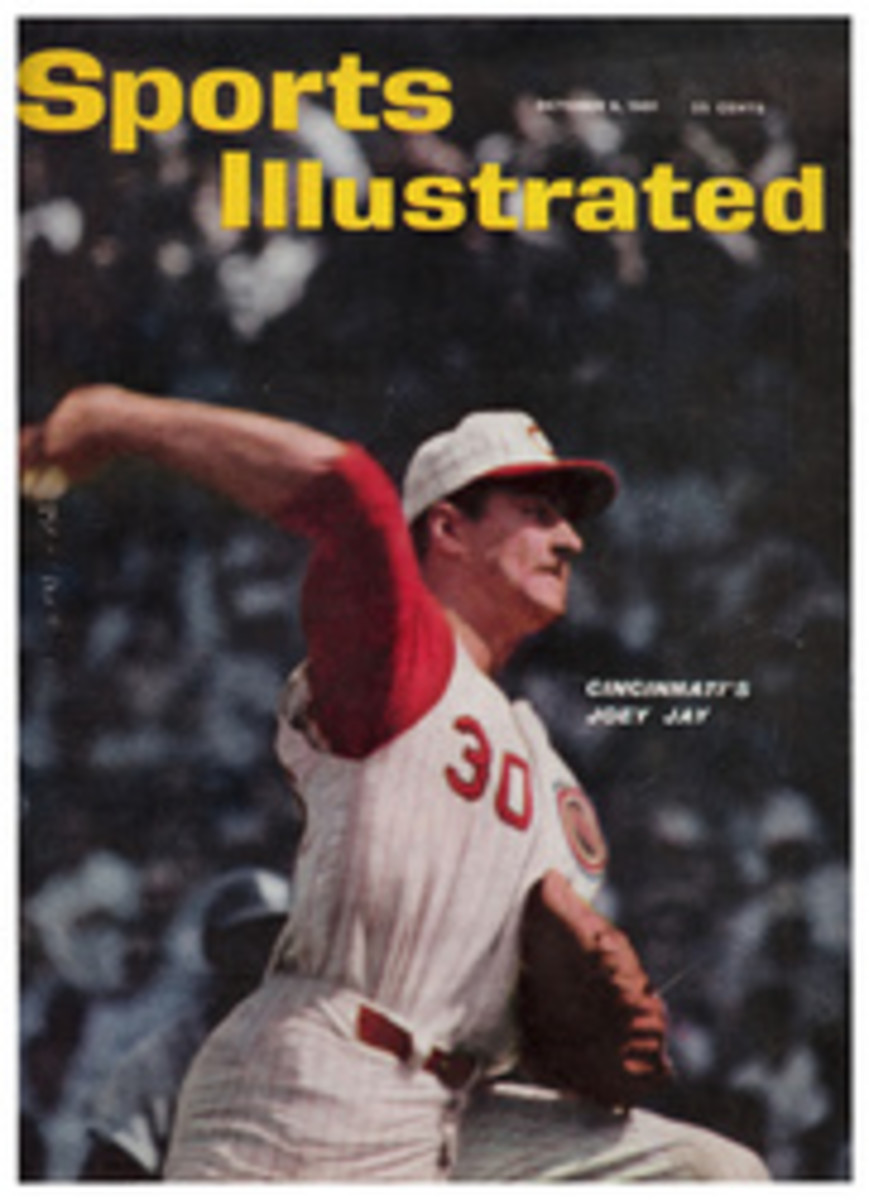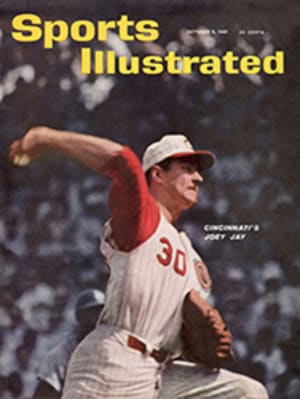
A HOT TOWN ON THE PO
Take Detroit, add a pinch of Boston and a dash of Washington, garnish with Sun Valley to the north and a California beach to the south, sprinkle lightly with Aqueduct race track and a Colorado trout stream. And what do you have? Torino, a bustling city of a million-plus which was the first capital of modern Italy 100 years ago and now is its fast-beating industrial heart.
Each pulse of Torino's heart spurts shiny new cars of daring design onto the highways of the world, for it is the home of Fiat, the Ford of Italy, of Lancia, and of men with magic names in the world of sleek, fast cars: Designers Sergio Pininfarina, Giovanni Michelotti, Nuccio Bertone and Ghia's Luigi Segre.
Their creations fill prosperous Torino's stately streets curb to curb, flit past the massive brickwork that was a city gate 2,000 years ago in Roman times, glide through piazzas of regal proportions, past baroque palaces and medieval churches, built when Torino was the seat of the House of Savoy. History has rushed past those ancient sovereigns and their monuments but not past Torino, whose current crown prince is Giovanni Agnelli, scion of the family that founded Fiat in 1899, sportsman and president of the organizing committee of the centenary exhibition "Italia 61," which has already brought more than 4 million visitors this year to see the gleamingly modern goods and services of the new Italy that Torino symbolizes. The exhibition will remain open through October.
In many ways Torino doesn't even seem Italian. Its streets run straight and meet at sensible right angles with the precision of a military camp (they should—Augustus' soldiers named the city Augusta Taurinorum). Its citizens are up bright and early, keep appointments on time, burst into song only in their showers. There are no strolling musicians, mendicants or soft-eyed young men seductively offering ballpoint pens for half price. Drivers stop at stop lights and almost never honk their horns.
Even the unruly river Po runs quietly in Torino, neatly encased in concrete banks and rows of recreation clubs that sport tennis courts and boats for hire. Parks and gardens dot the city, as does a vast collection of extraordinarily bellicose statuary. In almost every square is a large bronze man waving a sword, sheathing a sword or perishing in the arms of a sorrowing (and usually nude) female angel. Stirring days they had indeed in Torino, but today the citizenry has beaten its swords into casting rods, its cannon into bird guns.
This time of year everyone in town wears the air-sniffing alertness of the stag on top of the Stupinigi Hunting Lodge, for it is hunting and fishing time in the Alpine valleys to the north. Trout, pheasant, quail, wild hare and partridge are there for the taking. The masochistic can even scramble off to trail the elusive chamois and Alpine ibex in the Val d'Aosta if they don't mind falling off an Alp or paying a healthy sum ($150 and up) for the privilege of shooting.
At Ottino's fancy game shop on the Via Lagrange this time of year the window is full of boxes of gourmet-prized white truffles and plates of very small, very naked little birds. Every good restaurant in town has a special listing for game, and a Yank in Torino need not apologize for being hungry at 12 noon and again at 7:30 at night. In Rome such hours are considered scandalous, and somnolent waiters have not yet donned either jackets or smiles, but in Torino one dines early—and very well.
Where better than at the famous Ristorante del Cambio, which has catered to the great and the busy in crimson-and-gold fin de siècle finery for 250 years in the same spot? Cambio was the favorite restaurant of the genius of Italian unity, Camillo Cavour, and even today the tricolor of Italy and a neat plaque mark the spot where Cavour sat and, evidently, stared across the room at his own image in a mirror on the opposite wall.
There is 'l caval 'd brôns where a vast menu lists north Italian specialties in four languages and has separate listings on the back for Russian, Indian, Spanish-Portuguese, German-Austrian and Chinese dishes which will be prepared on request. Dining regularly at 'l caval 'd brôns is like a short course at the Berlitz School of Languages, with refreshments.
Both these restaurants and the more modest ones serve the best grissini in the world—the slimmest, crispest, best-tasting bread sticks to be had, and so specifically torinese, they say, that even exporting them to nearby Milano ruins their taste. Their taste is, in fact, elusive, as are many of the charms of Torino. This is not a city which overwhelms as does a Rome, a Florence, a Naples. Instead, it slips up as softly as a hunter in the hills, and charms the visitor over coffee in the vast Piazza San Carlo, which the torinesi use as a civic living room, or while he is strolling past the discreetly elegant shops in the arcades which line all streets in the center of town. In the comfort of the arcades rain never falls, hot sun never assaults and shopkeepers are so courteous it seems a breach of etiquette not to buy.
It is hard to know to which country, to which century, Torino belongs. Tucked strategically between the western Alps and the Ligurian Sea, just at the point where the Po Valley levels out onto a fertile plain, it has absorbed wave after wave of conflicting cultures and conquests, ideas and conventions and more or less belligerent visitors. Hannibal conquered it once; Erasmus of Rotterdam studied in its famous university; and a descendant of the Dukes of Savoy became Victor Emmanuel II, first king of Italy. Mussolini and then the Allies swept that dynasty into the dustbin. Torino was bombed repeatedly and when the smoke cleared there were the torinesi calmly making cars and vermouth and going skiing on their weekends.
With the tenacity of the south and the efficiency of the north they live in their strange mixture of Roman encampment, medieval court, galloping baroque (their churches drip angels and filigree as their statues do bravado) and the steel and glass of 20th century production lines and exposition halls. Consider the city on a sunny afternoon in late September. At the rear of Torino's best single building, the Palazzo Madama, a small fat child feeds pigeons on the great flat blocks of Roman pavement under the shadow of massive towers. A few feet away an old man with a cape dozes in the sun beside a 15th century tower added to the same building. Around in front, under the august marble facade stuck onto the building by a capricious queen in the 18th century, khaki-clad carabinieri salute smartly while a plump lady from New York, wearing a brown silk suit and green makeup on her eyelids, has her picture taken by a fat Englishman named Harry with a flaring red mustache. Harry and the lady from New York are both attending an international hairdressers' convention in Torino, and nobody finds it odd at all, because torinesi have absorbed some of the tastes of all their epochs. They enjoy an Egyptian museum reputedly second only to that in Cairo, a museum of the cinema and one of medieval armor, and an automobile museum where the wonderful chuggers of yesteryear are displayed in sequence leading to the sleek roarers of today. They are happy to share these things with the thousands who come for the three biggest annual events in the city, the International Automobile Show in October and November, the Show of Technical and Engineering Design in September and the spring and fall shows of ready-made clothing.
Torinesi also have a highly developed taste for horse racing, exercised at two tracks where trotters or flat racers run 100 days a year, and in June 3-year-olds compete for one of Europe's oldest cups, the $16,000 Gran Premio Principe Amedeo, first run in 1881.
In sport as in business the city is led by the ubiquitous Agnelli family. Emanuele Nasi, grandson of Fiat's founder and cousin of Giovanni Agnelli, is president of the organization that runs both tracks, president of the Polo Club and the Automobile Club of Torino. Giovanni Agnelli himself used to own and ride horses, was for several years president of Juventus, one of Torino's calcio (soccer) teams, until he passed that job to his younger brother Umber-to. He likes golf, fast cars, motorboats, and was a fine skier until an auto accident stiffened one leg. He still maintains an interest in the ski resort of Sestriere, founded by his grandfather. Skiing is magnificent in Sestriere for five months of the year, and for the other seven there are fishing, one of the highest golf courses in the world and mountain climbing for the hardy. Just a bit farther from Torino is Cervinia, at 6,600 feet, where skiing is good for 10 months of the year. And only two hours away from the city is the sea.
Virtually unknown as a tourist attraction during all its long life, Torino suddenly has been discovered, thanks to the automotive explosion to which it contributes so much and to the world attention gained by this year's centenary exposition. Now not only the Agnellis, the Nasis, the dozens of other notable noble and wealthy torinese families but also the hairdressers from New York and the businessmen from Pittsburgh are aware of its strategic advantages as a jumping-off point for a sporting and sightseeing holiday.
TWO PHOTOS
Giovanni Agnelli of Fiat (left) presides over "Italia 61" exhibition and striking silo-shaped hotels of Sestriere (right)
PHOTO
Ghia Designer Gigi Segre is shown in solo "pilot" seat of Selene II. With tow rear-facing seats, it will be "Car of 1970" at Torino's Auto Fair this month
TORINO TRAVEL FACTS
Getting There: Alitalia jets from New York to Milan make good Viscount connections to Torino. BEA has three weekly midday flights from London (2½ hours), and from Rome the express sleeper, leaving at 7:53 each evening, brings you there about 6 a.m.
Staying There: Principe di Piemonte is an outstanding de luxe hotel. Single with bath is $12. The Majestic Lagrange and the Ligure, both first class, are about $8 per day.
Eating: A meal at the Cambio (see text) is a reasonable $3 to $4, with carafe of wine. Also notable are the plush Gato Nero (about $5), the Gentilhom Grill Room of the Principe di Piemonte and 'l caval 'd brôns. October specialties are fonduta con tartufi, a fondue of fontina cheese and white truffles, and polenta, northern Italy's classic cornmeal dish, served with little game birds. Local red wines are Grignolino, Barolo and Barbera. Best white wine is Moscato.
Hunting and fishing: Shooting season is Aug. 27 to Dec. 15, except in mountains, where season closes Nov. 30. Chief game is heath cock, quail, marmot and rare chamois (license $150) and ibex (license $400). Other licenses are easily obtainable by presenting U.S. state license, validated by U.S. consul in Torino, to local authorities. Month's hunting license is $6 up, according to type of gun; all-inclusive fishing license $6. Best fish are trout in mountain streams, lakes, Po tributaries. After trout season closes Oct. 15, temolo, member of trout family, is best till Dec. 1. Other fish include mullet, pike, carp—available nearly all year.

